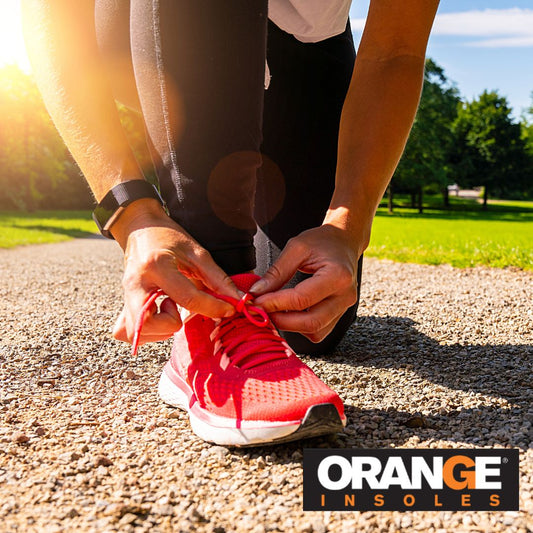Hiking is a fantastic way to explore the great outdoors, but it can take a toll on your feet. Keeping your feet strong and flexible is essential for a successful hike. Incorporating specific foot exercises into your routine can help prevent injuries, improve endurance, and ensure you enjoy every step of your journey. Let’s explore some of the best foot exercises for hikers. Here’s our helpful guide on stretching and preparation before a hike, and fun ways to incorporate these exercises into your daily routine.
Warm-Up Exercises
- Toe Raises Start your warm-up with toe raises. Stand on flat ground and slowly lift your toes while keeping your heels planted. This exercise strengthens the muscles on the top of your feet and improves balance, preparing your feet for the hike ahead.
- Ankle Circles Next, lift one foot off the ground and rotate your ankle in circles, both clockwise and counterclockwise. Ankle circles enhance flexibility and range of motion, crucial for navigating uneven terrain.
Read more: All about Ankle Pain
Strengthening Exercises
- Towel Scrunches To strengthen the muscles in your arches and toes, try towel scrunches. Sit with your feet flat on the floor and a towel in front of you. Use your toes to scrunch the towel towards you. This exercise targets the often-overlooked muscles in your feet.
- Heel Drops Heel drops are excellent for strengthening the calf muscles and improving Achilles tendon flexibility. Stand on a step with your heels hanging off the edge. Slowly lower your heels below the step level, then raise back up. Incorporate this exercise to build resilience in your lower legs.
- Resistance Band Exercises Use a resistance band to strengthen your feet and ankles. Wrap the band around the ball of your foot and gently pull back while pushing your foot against the resistance. This exercise improves strength and stability in your foot muscles.
Stretching Exercises
- Plantar Fascia Stretch Stretching your plantar fascia can alleviate tension and prevent conditions like plantar fasciitis. Sit down and cross one leg over the other. Pull back on your toes to stretch the bottom of your foot. Hold for 15-30 seconds and switch feet.
- Calf Stretch Stand facing a wall with one foot in front of the other. Bend your front knee while keeping your back leg straight and heel on the ground. This classic calf stretch targets the calf muscles and Achilles tendon, crucial for preventing tightness during hikes.
- Toe Flexor Stretch Sit on the floor with your legs extended. Loop a towel or band around your toes and gently pull back, stretching the muscles on the top of your feet. This helps improve flexibility and reduces tension in your foot muscles.
Balance and Stability Exercises
- Single-Leg Stands Improve your balance and ankle strength with single-leg stands. Stand on one foot for 30 seconds, then switch to the other foot. For added difficulty, close your eyes or stand on an unstable surface. This exercise is vital for navigating rocky or uneven trails.
- Balance Board Exercises Using a balance board or wobble board, practice shifting your weight and maintaining stability. Balance board exercises enhance overall foot and ankle stability, reducing the risk of sprains.
- Lunges Incorporate lunges into your routine to strengthen your legs and improve balance. Step forward with one foot, bending both knees to lower your body. Push back to the starting position and switch legs. Lunges target the muscles in your legs, feet, and ankles.
While In The Gym
Gym Machines Use gym machines like the leg press and calf raise machine to target your leg and foot muscles. These machines can help build strength and stability, preparing your feet for the demands of hiking.
Deadlifts Deadlifts are a full-body exercise that also benefits the feet. Focus on lifting with proper form: keep your back straight, hinge at the hips, and lift the barbell by driving through your heels. This movement engages the muscles in your feet, helping improve balance and strength.
Squats Squats, whether with body weight, dumbbells, or a barbell, are excellent for overall lower body strength. Maintain proper form by keeping your feet flat on the ground and pushing through your heels as you stand up. This exercise engages the muscles in your feet, helping improve stability and strength.
Stretching and Preparation Before a Hike
- Dynamic Stretching Before you hit the trail, incorporate dynamic stretching into your warm-up routine. Exercises like leg swings, high knees, and ankle bounces help loosen up your muscles and prepare your body for the hike.
- Proper Footwear and Insoles Invest in high-quality hiking boots that offer ample support and cushioning. Adding insoles designed for hiking can provide extra comfort and support, helping to prevent foot fatigue and injuries.
Read more: Support Insoles for Hiking Boots
- Hydration and Nutrition Stay hydrated and fuel your body with nutritious snacks before and during your hike. Proper hydration and nutrition are essential for maintaining energy levels and preventing cramps.
Why You Must Be Prepared
More than just having a good hike or being the best hiker version of yourself, these preparations are vital for lowering the risk of injuries so that the fun does not have to come to an abrupt stop. Here are some of the injuries you may encounter as a hiker:
|
Injury |
Symptoms |
Causes |
Prevention Tips |
|
Plantar Fasciitis |
Pain under the heel, especially in the morning |
Overuse, poor footwear, excessive pronation |
Stretching, proper footwear, insoles |
|
Achilles Tendonitis |
Pain and swelling in the Achilles tendon |
Overuse, tight calf muscles, excessive pronation |
Stretching, strengthening, proper footwear, insoles |
|
Shin Splints |
Pain along the front or inside of the lower leg |
Overuse, flat feet, improper footwear |
Gradual increase in activity, proper footwear, insoles |
|
Ankle Sprains |
Swelling, pain, and instability in the ankle |
Uneven terrain, weak ankles, improper footwear |
Balance exercises, proper footwear, insoles |
|
Blisters |
Red, painful, fluid-filled skin |
Friction from footwear, moisture |
Proper footwear, moisture-wicking socks, foot powder |
|
Knee Pain |
Pain around the kneecap, especially going uphill/downhill |
Overuse, improper footwear, excessive pronation |
Strengthening exercises, proper footwear, insoles |
|
IT Band Syndrome |
Pain on the outer side of the knee |
Overuse, tight IT band, improper footwear |
Stretching, strengthening, proper footwear, insoles |
|
Bunions |
Pain and swelling at the base of the big toe |
Poor footwear, excessive pronation, hereditary factors |
Proper footwear, insoles, avoiding high heels |
|
Stress Fractures |
Persistent pain in the foot or lower leg |
Overuse, sudden increase in activity, poor footwear |
Gradual increase in activity, proper footwear, insoles |
PubMed talks more about these injuries which are also common to Mountain bikers as well.
Incorporating these exercises into your routine will help keep your feet strong, flexible, and ready for any hike. Additionally, using insoles can provide extra support and comfort, complementing your exercise regimen. Prioritize your foot health to enjoy more comfortable and injury-free hikes. Happy hiking!

























































